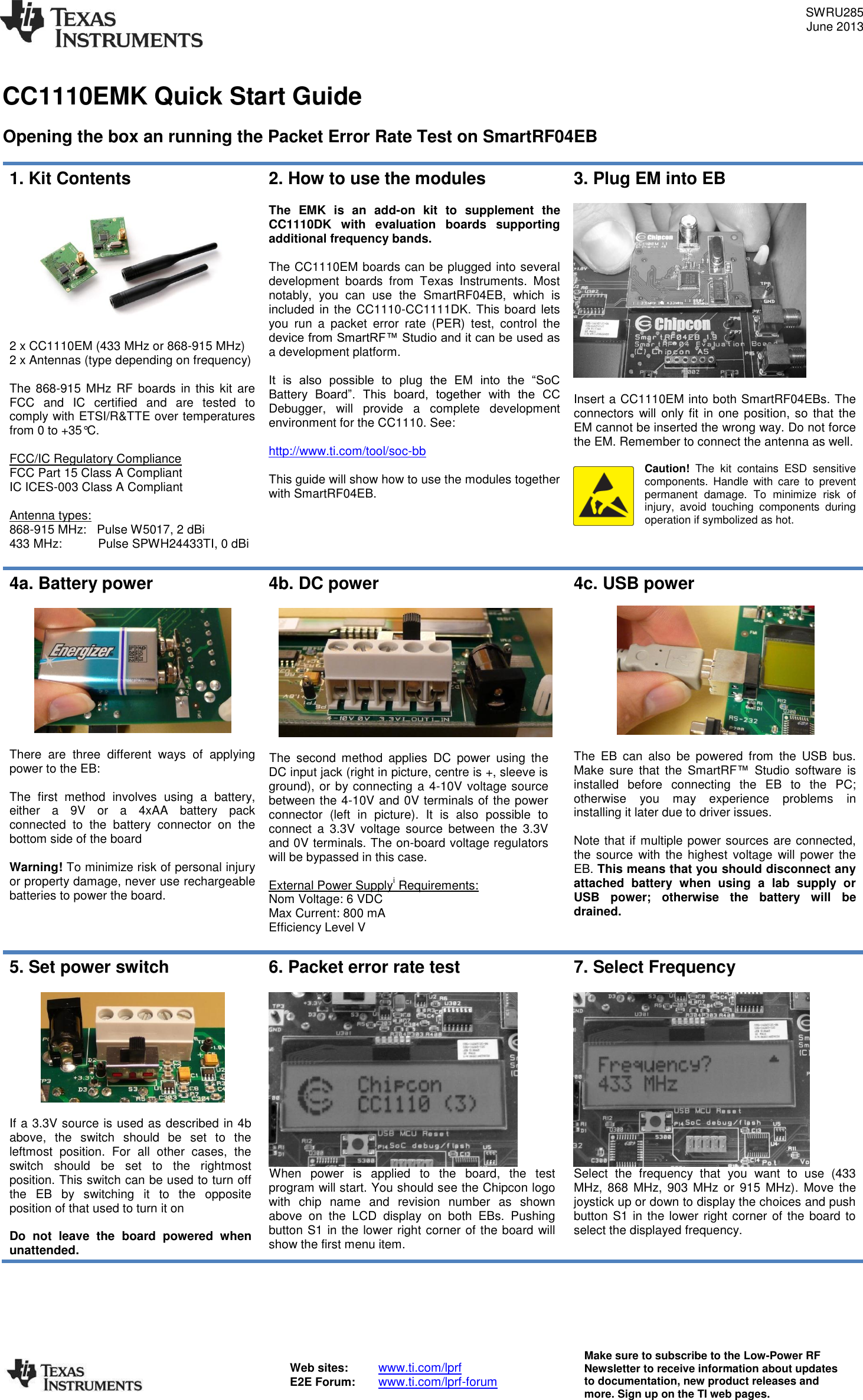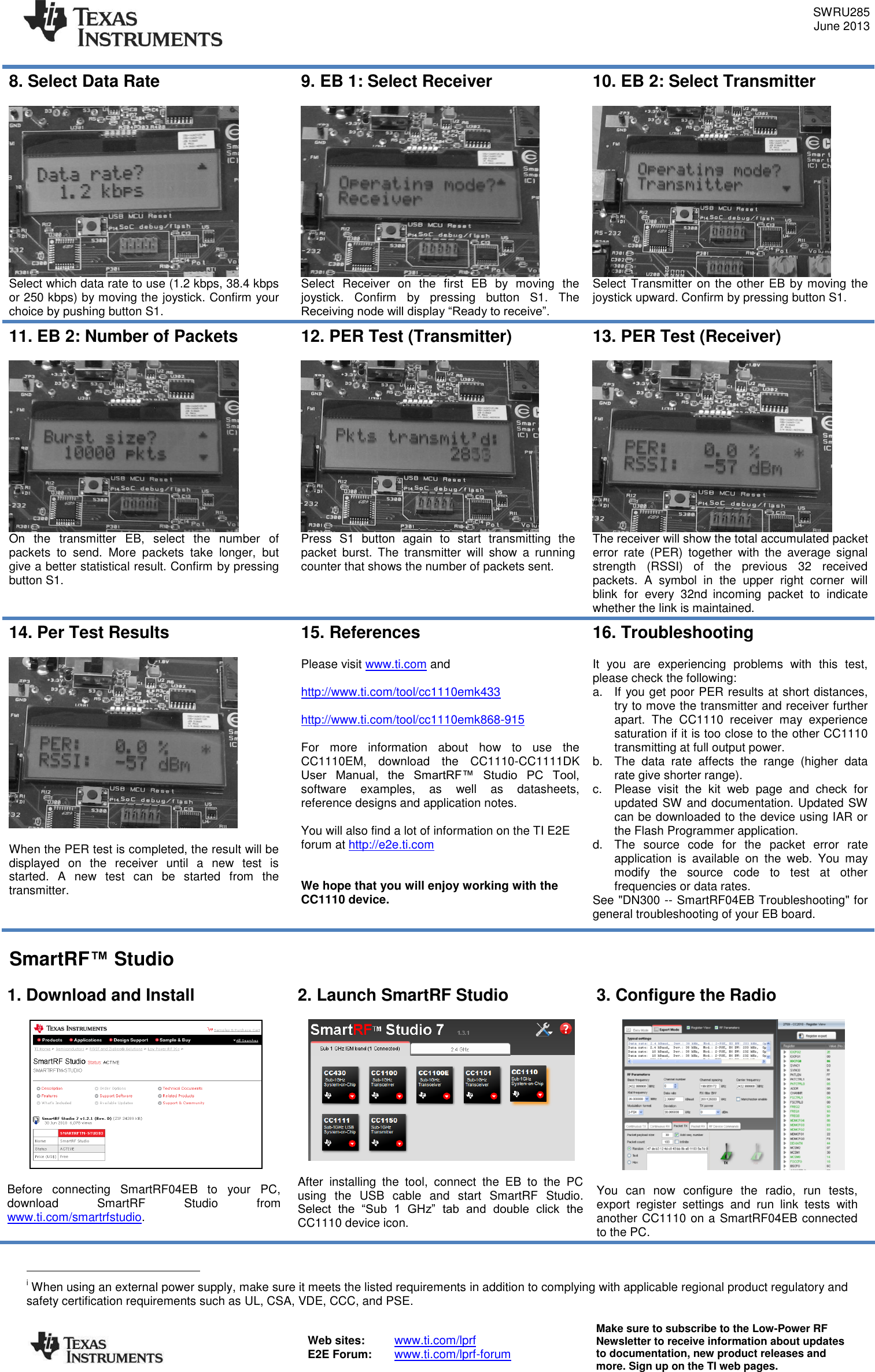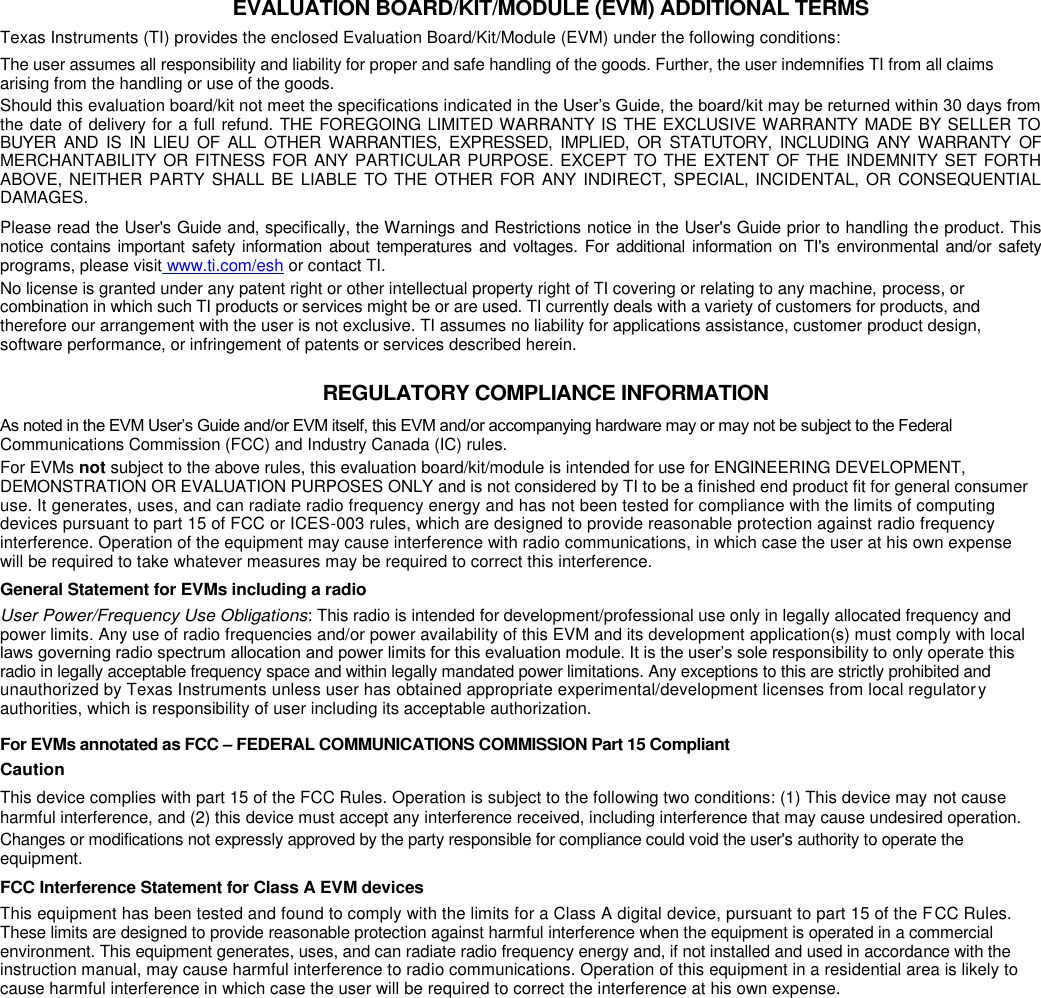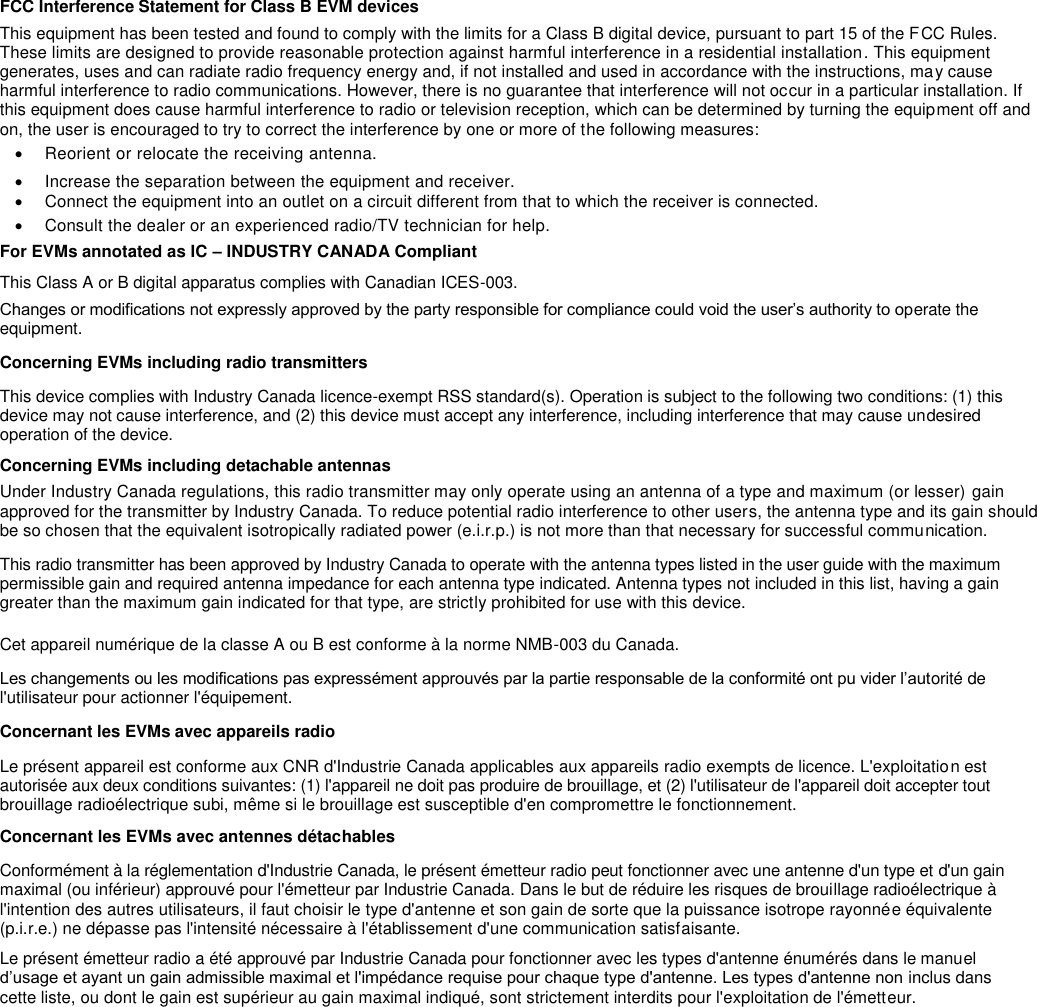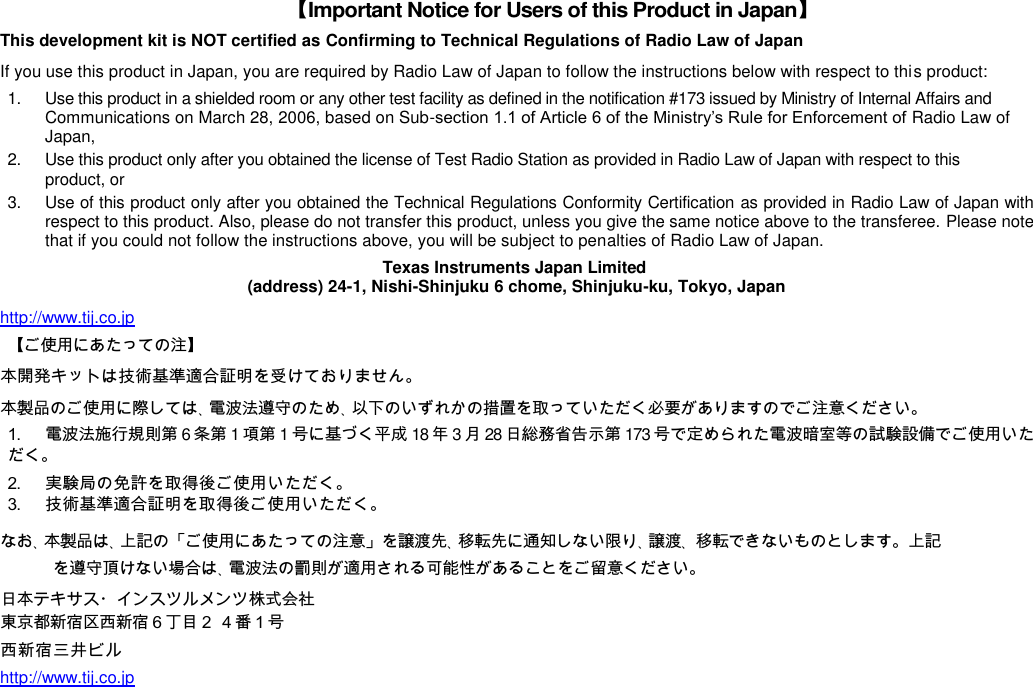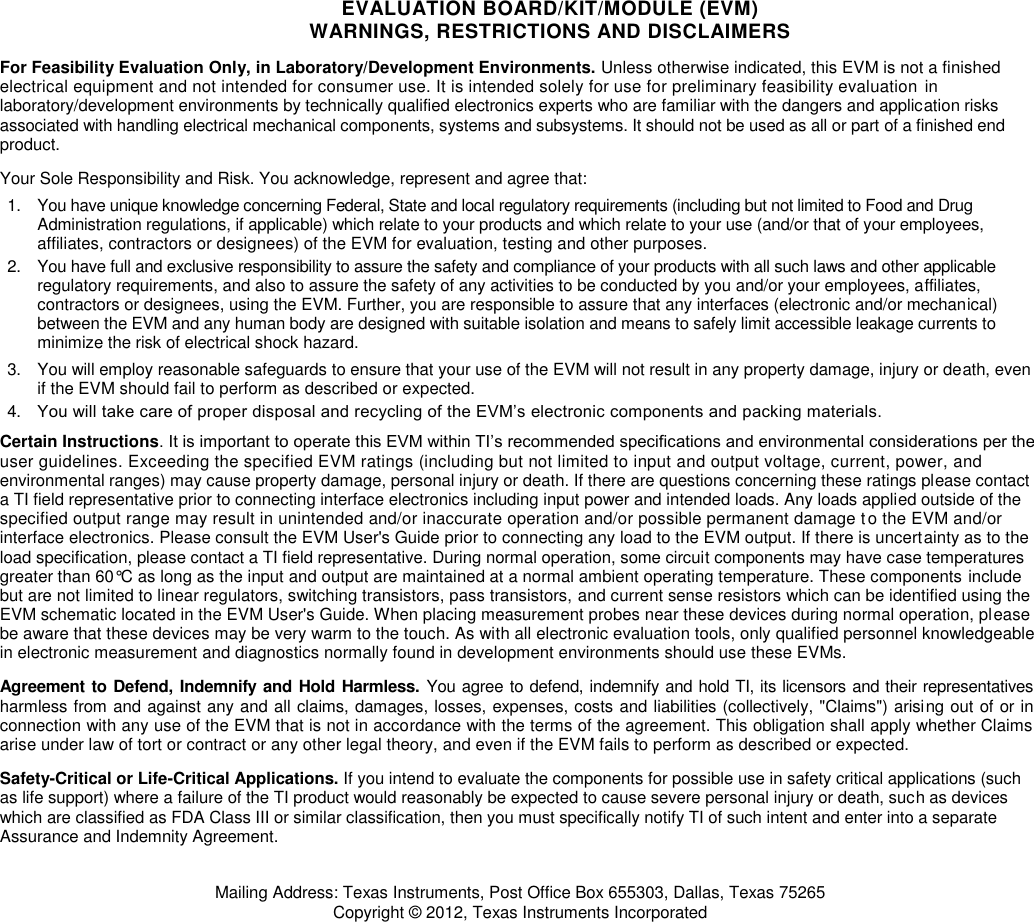Texas Instruments 1110EM900 The CC1110EM-868-915 is a development tool for TIs sub 1 GHz CC1110 chip. User Manual CC2510 CC2511DK Quick Start
Texas Instruments Inc. The CC1110EM-868-915 is a development tool for TIs sub 1 GHz CC1110 chip. CC2510 CC2511DK Quick Start
User manual
